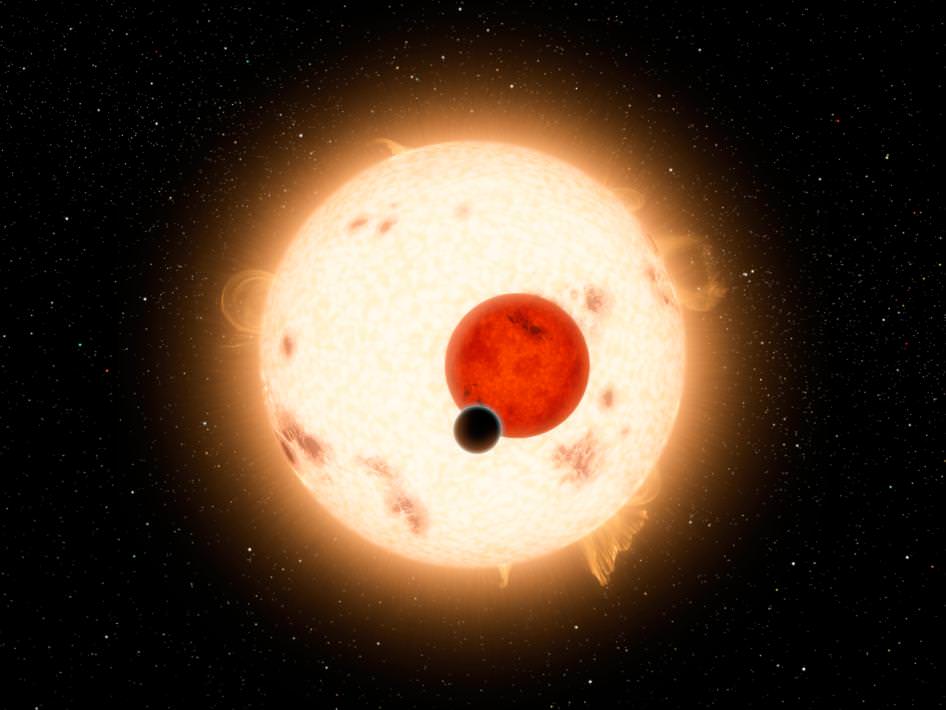With the latest
Kepler space telescope exoplanet finding announced yesterday
, the mighty planet hunter has now found 1,000 confirmed worlds -- with about 3,000 more planetary candidates just waiting for confirmation.
The NASA observatory has found exoplanets of many sizes -- smaller than Mercury, the size of our Moon, the size of Jupiter or larger, and in a couple of cases, Earth-sized worlds in the habitable regions of their stars. Below is a gallery of some of the observatory's notable finds.
[caption id="attachment_103162" align="alignnone" width="472"]
An artist's conception of a planet in a star cluster. Credit: Michael Bachofner[/caption]
[caption id="attachment_117951" align="alignnone" width="580"]
An artist's conception of one of the newly released exo-worlds, a planet orbiting an ancient planetary nebula. Credit: David A. Aguilar/CfA.[/caption]
[caption id="attachment_109197" align="alignnone" width="580"]
Meet Kepler-22b, an exoplanet with an Earth-like radius in the habitable zone of its host star. Unfortunately its mass remains unknown. Image Credit: NASA[/caption]
[caption id="attachment_100123" align="alignnone" width="580"]
NASA's Kepler mission has discovered a new planetary system that is home to the smallest planet yet found around a star like our sun, approximately 210 light-years away in the constellation Lyra. Credit: NASA/Ames/JPL-Caltech[/caption]
[caption id="attachment_91990" align="alignnone" width="580"]
Artist's Concept of Kepler-20e, one of two Earth-sized planets found by the Kepler spacecraft. Credit: NASA/Ames/JPL-Caltech[/caption]
[caption id="attachment_100243" align="alignnone" width="580"]
Kepler-37b, a moon-sized exoplanet. Credit: NASA/Ames/JPL-Caltech[/caption]
[caption id="attachment_92549" align="alignnone" width="400"]
Artist's conception of the Kepler-35 system where a Saturn-sized planet orbits its two stars. Credit: © Mark A. Garlick / space-art.co.uk[/caption]
[caption id="attachment_88763" align="alignnone" width="580"]
The "invisible" world Kepler-19c, seen in the foreground of this artist's conception, was discovered solely through its gravitational influence on the companion world Kepler-19b - the dot crossing the star's face. Kepler-19b is slightly more than twice the diameter of Earth, and is probably a "mini-Neptune." Nothing is known about Kepler-19c, other than that it exists. Credit: David A. Aguilar (CfA)[/caption]
[caption id="attachment_112211" align="alignnone" width="580"]
Illustration of Kepler-186f, a recently-discovered, possibly Earthlike exoplanet that could be a host to life. (NASA Ames, SETI Institute, JPL-Caltech, T. Pyle)[/caption]
 Universe Today
Universe Today
